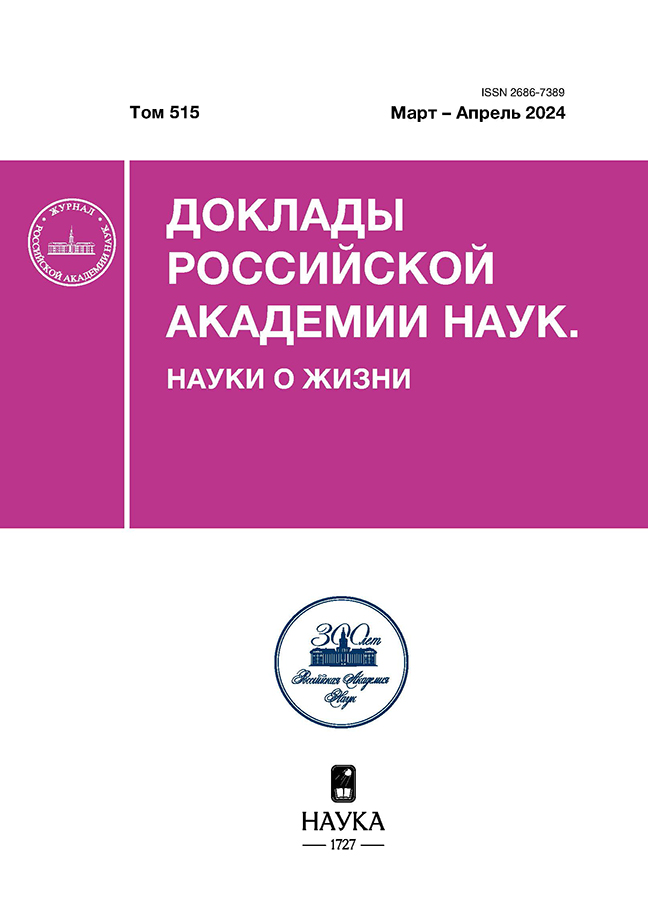Modular nanotransporters capable of cause intracellular degradation of the N-protein of the SARS-CoV-2 virus in A549 cells with temporary expression of this protein fused with the fluorescent protein mRuby3
- Autores: Khramtsov Y.V.1, Ulasov A.V.1, Lupanova T.N.1, Georgiev G.P.1, Sobolev A.S.1,2
-
Afiliações:
- Institute of Gene Biology, RAS
- Lomonosov Moscow State University
- Edição: Volume 515, Nº 1 (2024)
- Páginas: 45-48
- Seção: Articles
- URL: https://vestnik.nvsu.ru/2686-7389/article/view/651440
- DOI: https://doi.org/10.31857/S2686738924020085
- EDN: https://elibrary.ru/WFGUMP
- ID: 651440
Citar
Texto integral
Resumo
Modular nanotransporters (MNTs) have been created containing an antibody-like molecule, monobody, to the N-protein of the SARS-CoV-2 virus, as well as an amino acid sequence that attracts the E3 ligase Keap1 (E3BP). This MNT also included a site for cleavage of the E3BP monobody from the MNT in acidic endocytic compartments. It was shown that this cleavage by the endosomal protease cathepsin B leads to a 2.7-fold increase in the affinity of the E3BP monobody for the N-protein. Using A549 cells with transient expression of the N-protein fused with the fluorescent protein mRuby3, it was shown that incubation with MNT leads to a significant decrease in mRuby3 fluorescence. It is assumed that the developed MNTs can serve as the basis for the creation of new antiviral drugs against the SARS-CoV-2 virus.
Palavras-chave
Texto integral
Sobre autores
Y. Khramtsov
Institute of Gene Biology, RAS
Autor responsável pela correspondência
Email: alsobolev@yandex.ru
Rússia, Moscow
A. Ulasov
Institute of Gene Biology, RAS
Email: alsobolev@yandex.ru
Rússia, Moscow
T. Lupanova
Institute of Gene Biology, RAS
Email: alsobolev@yandex.ru
Rússia, Moscow
G. Georgiev
Institute of Gene Biology, RAS
Email: alsobolev@yandex.ru
Academician
Rússia, MoscowA. Sobolev
Institute of Gene Biology, RAS; Lomonosov Moscow State University
Email: alsobolev@yandex.ru
Corresponding
Rússia, Moscow; MoscowBibliografia
- Clercq E.D., Li G. // Clin Microbiol Rev. 2016. V. 29. P. 695–747.
- Gebauer M., Skerra A. // Annu Rev Pharmacol Toxicol. 2020. V. 60. P. 391-415.
- Shipunova V.O., Deyev S.M. // Acta Naturae. 2022. V. 14. № 1(52). P. 54–72.
- Tolmachev V.M., Chernov V.I., Deyev S.M. // Russ Chem Rev. 2022. V. 91. № 3. RCR5034
- Surjit M., Lal S.K. // Infect Genet Evol. 2008. V. 8. P. 397–405.
- Wu C., Zheng M. // Preprints. 2020. 2020020247.
- Prajapat M., Sarma P., Shekhar N., et al. // Indian J Pharmacol. 2020. V. 52. P. 56.
- Du Y., Zhang T., Meng X., et al. // Preprints. 2020. doi: 10.21203/rs.3.rs-25828/v1.
- Khramtsov Y.V., Ulasov A.V., Lupanova T.N., et al. // Dokl Biochem Biophys. 2023. V. 510. P. 87–90.
- Lu M., Liu T., Jiao Q. et al. // Eur J Med Chem. 2018. V. 146. P. 251–259.
- Fulcher L.J., Hutchinson L.D., Macartney T.J., et al. // Open biology. 2017. V. 7. 170066.
- Slastnikova T.A., Rosenkranz A.A., Khramtsov Y.V., et al. // Drug Des Devel Ther. 2017. V. 11. P. 1315–1334.
- Khramtsov Y.V., Ulasov A.V., Lupanova T.N., et al. // Dokl Biochem Biophys. 2022. V. 506.
- Kern H.B., Srinivasan S., Convertine A.J., et al. // Mol Pharmaceutics. 2017. V. 14(5). P. 1450–1459.
- Wang S., Dai T., Qin Z., et al. // Nat. Cell Biol. 2021. V. 23. P. 718–732.
Arquivos suplementares












